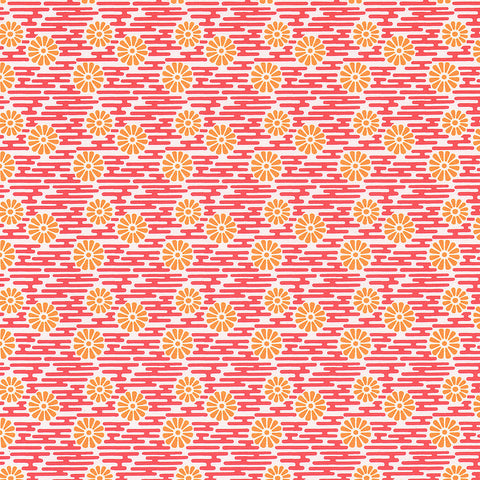

Maybe that’s why these objects are, after all, very different from mass-produced Sears catalogues: slower is sometimes better. The richly colored, visually dynamic from the 8th century. Another thing I discovered at this exhibition is that even though faster methods of production were available to Japanese designers in the late nineteenth century (such as engraved or lithographic reproduction), they still produced these commercial books through the extremely time-consuming moku hanga method.

There is also an intriguing card of brightly-colored woolen circles, which turn out to be color samples, each one with its particular formula written in pen and ink beside it. The items on display range from landscape and nature scenes to decorative arrangements of plant motifs, some of them influenced by Japanese contact with Art Deco and Art Nouveau movements in Europe. She thought it was like someone collecting old Sears catalogues.” However, this workshop is out of the studies plan, it is sponsored by an external project. Recommended by Emma (Marketing & Communications Manager): 'Water, light, and nature dance together in this delightful new work from Eva Pietzcker. “Even a Japanese friend of mine, whose family was involved in the design business for hundreds of years, asked me why I wanted to collect all this stuff. Moku Hanga at college: Universidad Metropolitana de Ciencias de la Educacin (UMCE) only one person who is practicing and teaching an approach of Moku Hanga technique in this university. Medium: Moku Hanga woodcut Dimensions: 16 1/4 x 11 1/2 inches (Image/Sheet) Signature: Signed Artist details: German, 1966 Date finished: 2019/20 Edition: Numbered. Detailed step-by-step instructions on the basic techniques of designing, carving and printing guide you from start to finish. A practical and comprehensive guide to the Japanese style of printmaking. 2011: Moku hanga at PBI (Paper and Book Intensive) art sabbatical, Ox-Bow. “There really hasn’t been interest in it until recently,” Pevtzow said. Mokuhanga Fundamentals: Core Skills to Successfully Make your First Japanese Woodblock Printsby Terry McKenna. 1985-89: Wood-Block printing (moku hanga, Ukiyo-E technique) at the Yoshida. It is curious why this material hasn’t been exhibited more often. Arabesque patterns, mid nineteenth century, woodblock printed book and ink on paper ( click to enlarge)


 0 kommentar(er)
0 kommentar(er)
